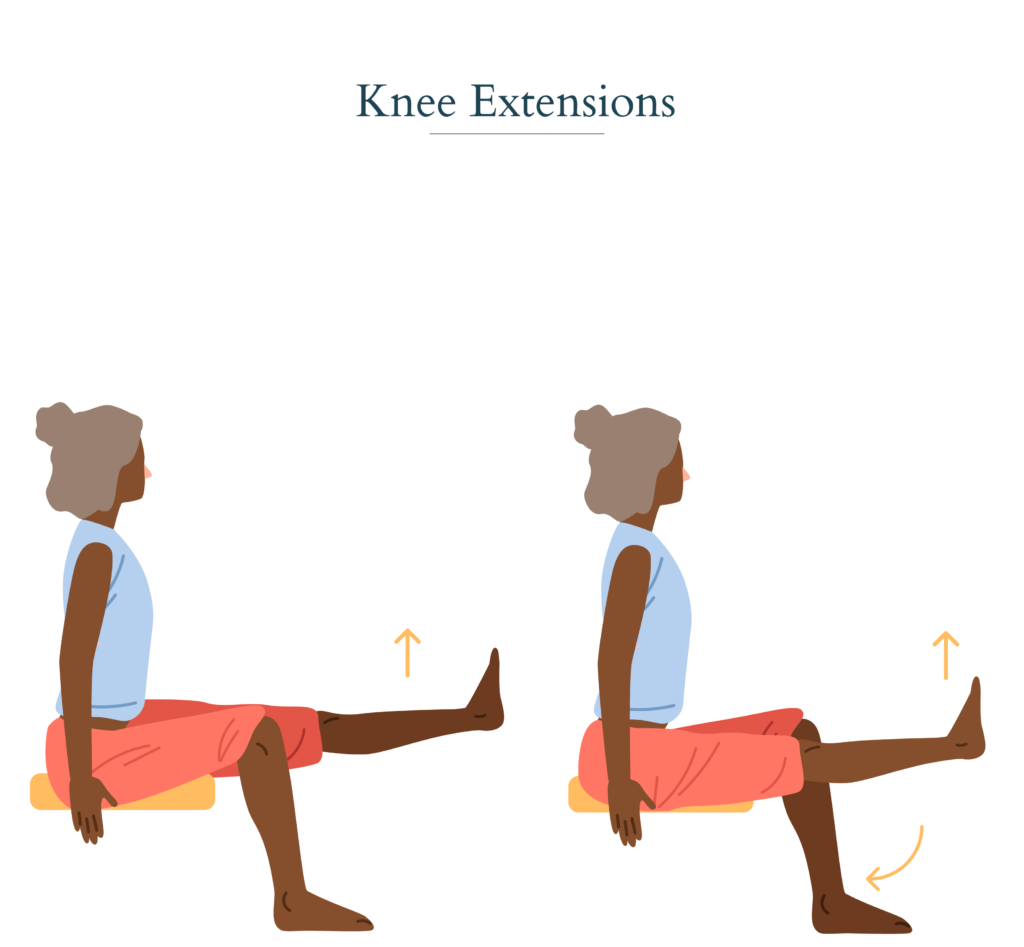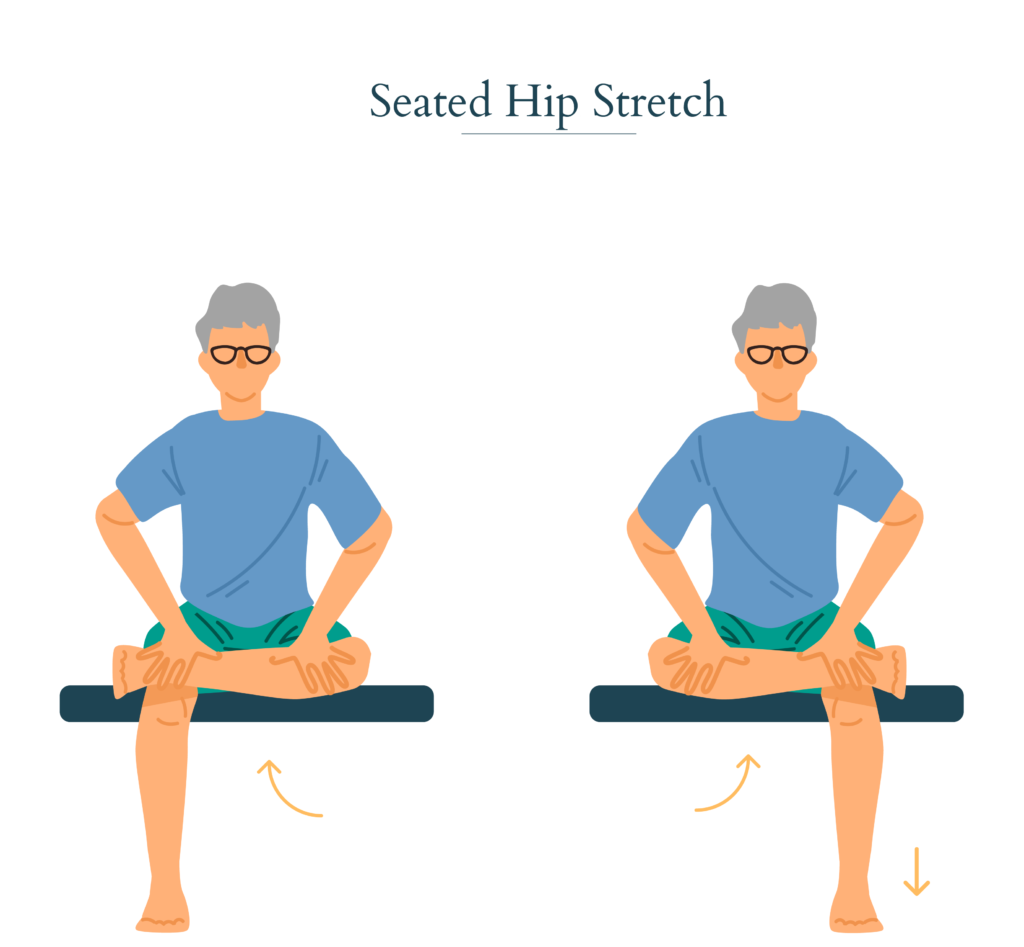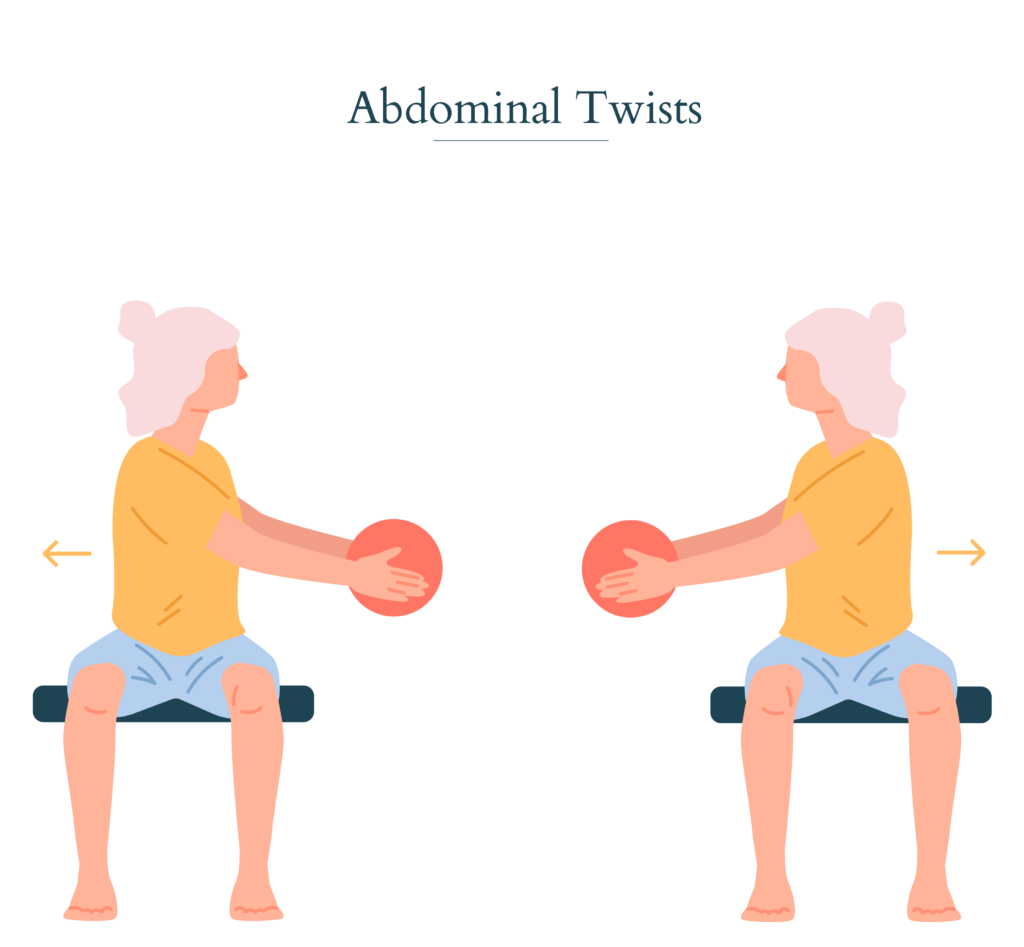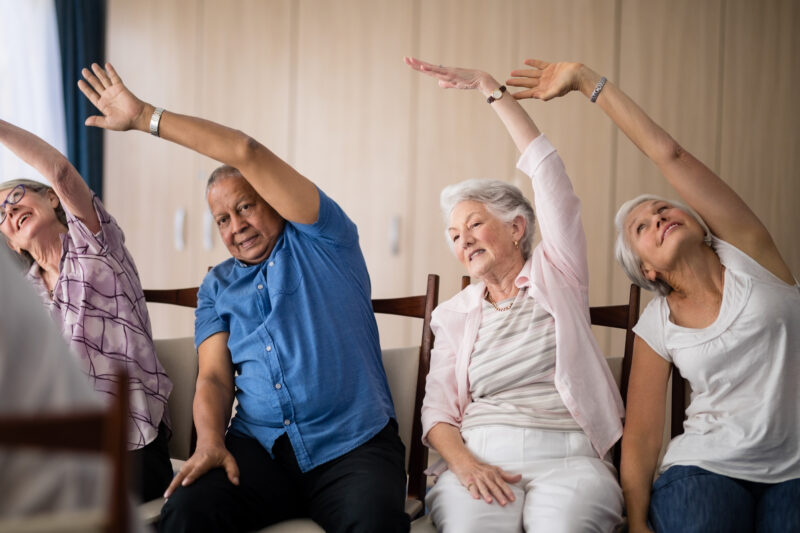There’s no doubt exercise is good for us, no matter our age. However, the reality is that as we age, our mobility can decline, which can limit the exercise options of many older adults.
But limited mobility doesn’t have to mean an end to exercise. Senior adults who can’t walk or stand for long periods of time can still get exercise from the comfort of a chair.
Physical benefits of chair exercises
Chair exercises are a great way to improve the physical well-being of older adults who may not be able to participate in other types of exercise. More than 60% of people who took part in a pilot program with the Royal Voluntary Service and exercise specialists Move It or Lose It showed improvement in their physical well-being, according to Nursing Times.
“There is clear evidence that regular performance of exercise, which may include chair exercises, improves health and quality of life,” said Amy Fulte, a physical therapist and supervisor at Liberty Hospital in Liberty, Missouri. “Exercise can lead to improved muscle strength and endurance that can help to delay or reverse frailty. It can also have a positive effect on mood, improve quality of life, decrease risk of heart disease, stroke, hypertension and Type II diabetes—and help prevent bone loss.”
A safer option
Chair exercises are simple, but they keep joints moving and help to get muscles working. They’re a safe way to help seniors get the recommended 150 minutes of moderate exercise every week.
“This can be very difficult for individuals who have limited mobility and/or balance, so chair exercises are a great way to be able to exercise,” Fulte said. “These simple movements can help to strengthen muscles, lubricate joints – which can decrease pain and stiffness – and improve circulation, helping to make people feel better and move with greater ease and confidence.”
As with any new exercise program, however, you need to understand your loved one’s limits, she said.
“It is important for people who are not currently exercising to check with their doctor before initiating a new exercise program. It’s also important to start slowly when beginning an exercise program and to listen to your body. You should know your limits, and if something doesn’t feel right, don’t keep doing it, or do the movement in a smaller range. If you continue to feel discomfort or pain, consult your doctor for guidance.”
Practice good posture
Posture is also an important consideration when doing chair exercises.
“When performing seated exercise, the feet should be flat on the floor with the ankles directly below the knees with the feet about shoulder-width apart,” Fulte said. “You should sit tall and try to tuck your navel in towards your spine, which offers back support and improves posture. Your chin should be parallel to the floor, and try to look straight ahead while performing the exercises.”
Chair exercises provide clear benefits for senior adults with limited mobility, and it’s easy to get started with these five chair exercises that work different parts of the body.
Chair exercise options

Sit-to-stand
This exercise can help improve your stability when rising and seating yourself. If it’s too hard to do this exercise without touching the chair with your hands, use a chair with arms and brace your hands on the arms of the chair as you rise.
- Sit comfortably in your chair near the edge of the seat. Make sure your toes are facing forward or are angled slightly out to the side.
- Hold your arms straight out in front of you.
- Slowly use your hips to push your body into a standing position. Make sure your knees don’t bend toward the inside when doing this exercise.
- Sit back down, again making sure your knees don’t bend toward the middle.

Knee extension
Knee extensions can help strengthen the muscles in your knees and improve your range of motion.
- Sit up straight in your chair with your back against the back of the chair.
- Grip the sides of the seat of the chair.
- Let your legs form a 90-degree angle with the chair.
- Straighten one leg until it is extended in the air in front of you parallel with the floor. Keep your other leg at a 90-degree angle to the chair with your foot on the floor.
- Slowly lower the leg back to its original position.
- Do the same thing with the other leg.

Seated hip stretch
Hip pain is a common complaint as we grow older. Use the seated hip stretch to loosen the hip muscles and reduce pain.
- Sit comfortably in the chair, keeping your back straight and your feet flat on the floor.
- Take your right leg and cross it over your left leg, creating a triangle. Make sure your right ankle is past your left leg.
- Bend your upper body forward, stopping if you feel pain or tension in your hips or glutes.
- Remain in this position for 10 to 20 seconds.
- Change legs and repeat.

Abdominal twist
This exercise can be done with or without a medicine ball. If you want to do it with some weight and don’t have a medicine ball, you can use a heavy book.
- Sit near the edge of the chair with your feet flat on the floor and your spine straight.
- If you’re holding a medicine ball or book, lift it off your lap and hold it in front of you. If you aren’t using any extra weight, hold your arms out in front of you.
- Rotate your entire torso to the left and then back to the center.
- Rotate your entire torso to the right and then back to the center.

Armchair pushup
This exercise works your arms and your core.
- Choose a chair with arms.
- Sit comfortably near the edge of the chair with your hands on the arms and your feet on the floor.
- Slowly use your arms to lift your bottom off the seat of the chair. Make an effort not to use your legs to help lift.
- Hold that position for a second or two.
- Lower yourself back into the chair.

